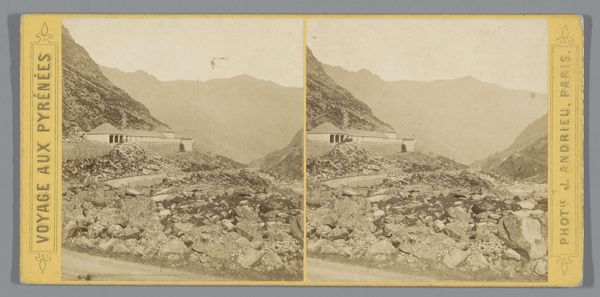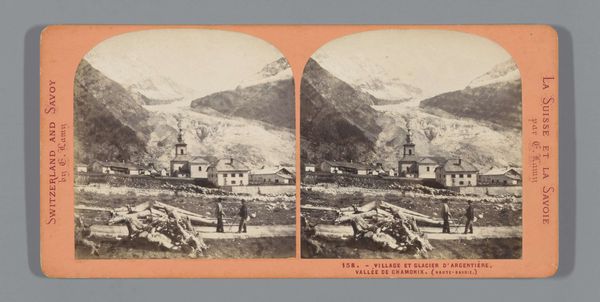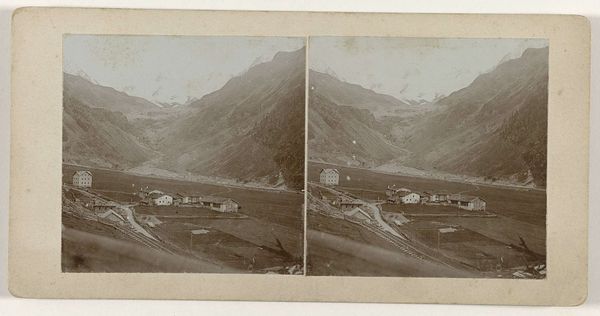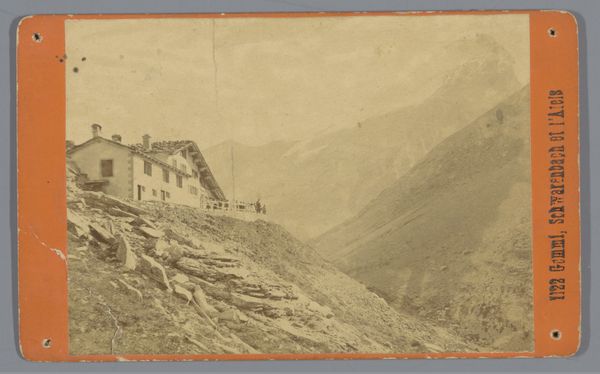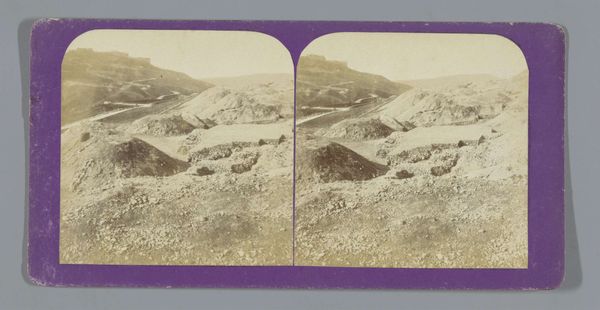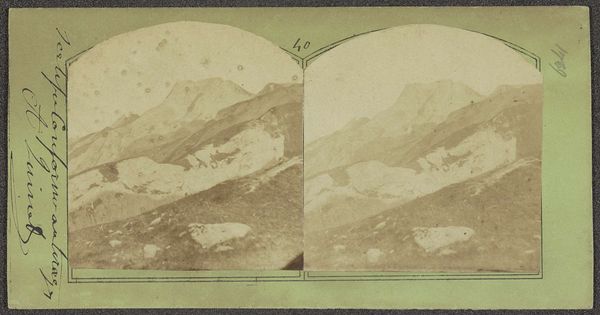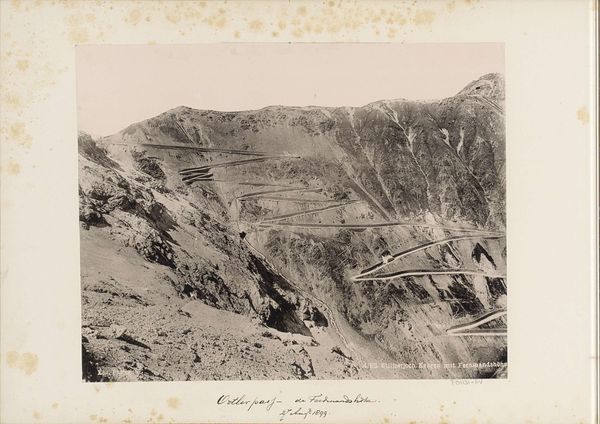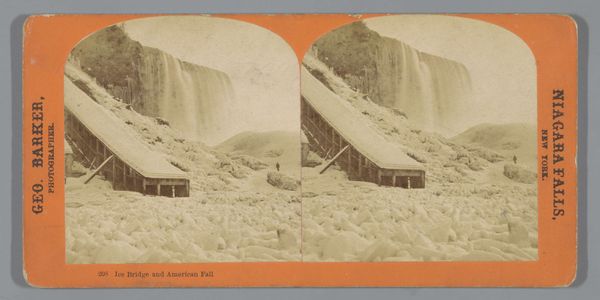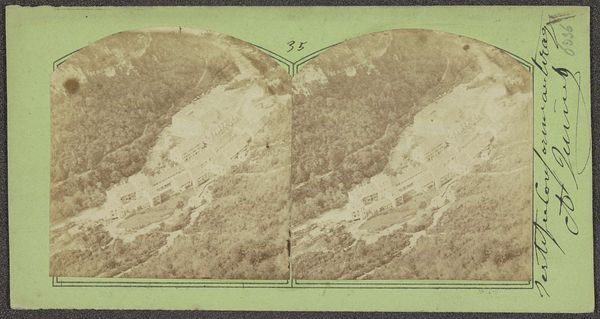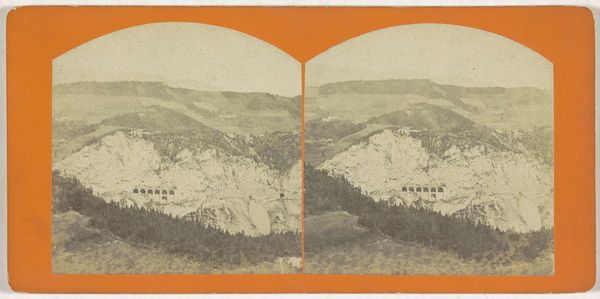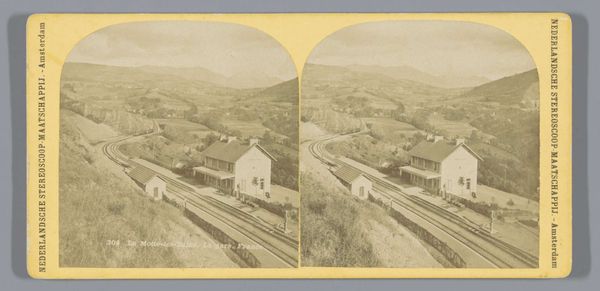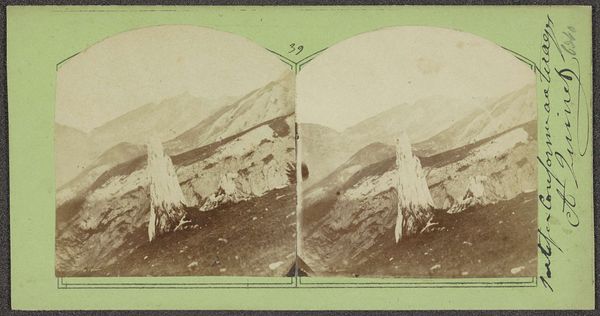
Dimensions: height 85 mm, width 170 mm
Copyright: Rijks Museum: Open Domain
Curator: This is an albumen print titled "Gezicht op de Furkapas, met op de voorgrond enkele gebouwen," taken by Florentin Charnaux after 1879. Editor: My first thought is how desolate it looks. The textures of the mountain are quite beautiful, rendered in such precise detail. But those small structures only seem to accentuate the vastness of the landscape. Curator: Indeed, it’s a wonderful example of 19th-century photography capturing the sublime. The construction of mountain passes was of huge interest. This romantic representation highlights humanity's attempts to conquer nature and to experience something as ineffable as landscape and distance. Editor: I find it fascinating how the road visually carves through the frame. The lines converge towards the vanishing point creating a strong perspectival pull, don't you think? And the light, it’s quite subtle, accentuating forms through slight gradations, drawing our eye deeper into the composition. Curator: It absolutely draws the eye. I would also add that photography at the time helped normalize particular tropes of landscape as national symbols. We see this view marketed on the periphery as representative of both Switzerland and Savoy—it evokes a very precise social imaginary that this relatively new medium accelerated greatly. Editor: True, yet I can’t help but notice how that affects the balance within the image itself, from a purely visual point of view. It leads the eye perhaps a little too directly, rather than allowing the gaze to wander across the surface in search of contrasts or hidden focal points. Curator: Well, perhaps what appears too direct is actually a window into the worldview of the time, when technology seemed to offer ever greater prospects for mastery of place and distance, though that didn't ultimately succeed. Editor: Still, those delicate, textural contrasts are stunning. Curator: Absolutely, and that formal consideration of photography, even in the 19th century, shaped not just aesthetics but ideas and assumptions. Editor: So, what we’re left with is a beautiful interplay between the composition itself, the society from which it arose, and how each of those informs our understanding of this landscape even now. Curator: Precisely! A lasting meditation on progress, nature, and perception itself.
Comments
No comments
Be the first to comment and join the conversation on the ultimate creative platform.
